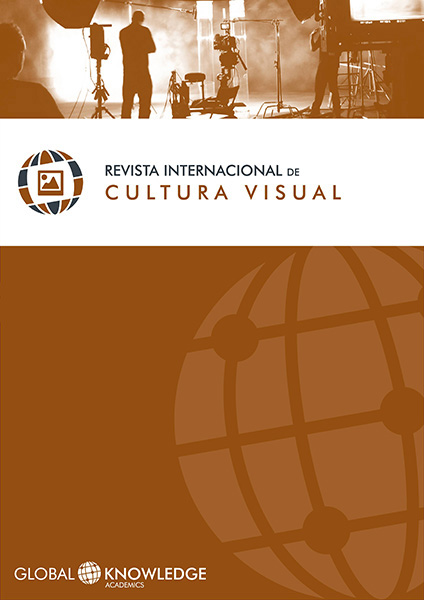Fears and customs from the farmers as obstacles to the progress of a Nation. The civilized and not civilized in the illustrations from the tales of Manuel José Othón
DOI:
https://doi.org/10.37467/gka-revvisual.v6.2180Keywords:
Manuel José Othón, Civilized, Not Civilized, Fears and Customs, Obstacles, IllustrationsAbstract
In this work, we analyze the illustrated tales “Coro de Brujas”, “El nahual” and “Encuentro pavoroso” by the writer and politician Manuel José Othón (1858 – 1906). We have identified how the author detailed, represented and revealed the popular figures of the Porfirian peasantry and their fears, superstitions and customs as obstacles to progress. We also examine the modernizing sense that seeks to civilize peasants, embodied in male characters that act as local authorities. Thus, from a historical, historiographic and literary perspective, different peculiarities present in the construction of Mexico as a nation can be identified in Othón’s work.
Downloads
References
Carbó, C. y François G. (1982). Entrevista a Michel de Certeau-primera parte. Disponible en http://www.elseminario.com.ar/biblioteca/Carbo_Giraud_entrevista_decerteau.htm Consultado el 12 de febrero de 2019
Didi-Huberman, G. (2014). Parcelas de humanidades. En: Pueblos expuestos, pueblos figu-rantes (pp. 11-50). Buenos Aires: Manantial.
Easterling, S. (2011). Gender and poetry Writing in the Light of Mexico’s Liberal Victory, 1867-ca. 1890. Mexican studies/Estudios mexicanos, 27(1), 97-142. DOI: 10.1525/msem.2011.27.1.97 DOI: https://doi.org/10.1525/msem.2011.27.1.97
Granados, P. (2010). Introducción. En: P. Granados (coord.), El ocaso del Porfiriato (pp. 19-48). México: FLM/FCE.
Hernández Castillo, D. (2018). El cuerpo como instrumento para violentar y humillar en el cuento “El pastor Corydón” de Manuel José Othón. Tenso Diagonal, 5, 125-131. Dis-ponible en http://www.tensodiagonal.org/TD05/TensoDiagonal05-ZC-Hernandez.pdf Consultado el 20 de enero de 2019.
Hernández Fuentes, M. (et. al). (2017). El campo de la historiografía. Inducción. México: DCSH, Posgrado en Historiografía, UAM-A.
Katz, F. y Lomnitz C. (2011). El porfiriato y la Revolución en la historia de México. México: ERA.
Koselleck, R. (1993). “Espacio de experiencia” y “Horizonte de expectativa” dos categorías históricas. Futuro pasado. Para una semántica de los tiempos históricos (pp. 333-357). Barcelona: Paidós.
Lanson, G. (2003). La historia literaria y la sociología. Literatura: teoría, historia, crítica, 5, 195-118. DOI:10.15446/lthc DOI: https://doi.org/10.15446/lthc
Lutz, B. (2009). El Estado y los campesinos: evolución de los mecanismos de vigilancia y castigo en el siglo XX. En: G. Ávalos Tenorio, El Estado mexicano, (pp. 149-191). México: UAM-X.
Montejano y Aguiñaga, R. (2001). Manuel José Othón y su ambiente. México: Universidad Autónoma de San Luis Potosí.
Othón, M. J. (2016). Cuentos de espantos y novelas rústicas. México: Fontamara.
Peñalosa, J. A. (1995). Introducción. En: M. J. Othón, Cuentos completos de Manuel José Othón, (7-53). México: Universidad Autónoma de San Luis Potosí. Disponible en http://ninive.uaslp.mx/jspui/bitstream/i/3158/2/ceu0107.pdf Consultado el 18 de enero de 2019.
Simonson, P. (2004). Cuando la literatura escribe la historia literaria. Literatura: teoría, historia, crítica, 6, 183-219. DOI:10.15446/lthc DOI: https://doi.org/10.15446/lthc
Uribe Soto, M. L. (2016). Prostitutas, rateras y pulqueras. México: Universidad Autónoma de San Luis Potosí/CENEJUS.
Downloads
Published
How to Cite
Issue
Section
License
Those authors who publish in this journal accept the following terms:
- Authors will keep the moral right of the work and they will transfer the commercial rights.









